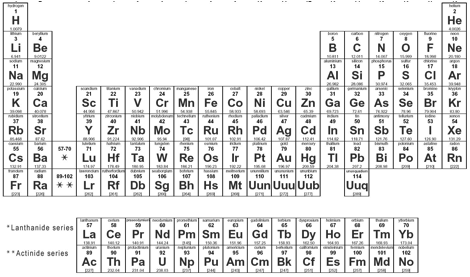EXAM 2
CHEMISTRY 220a
Friday, April 5, 2013
NAME (print): ________________________________________________________
TA:_________________ Sect. Day:_________________ Sect. Time:_____________
Fill in the information above. Place your name on the top right of subsequent pages.
Take a few moments to look over the exam. Answer each question on the exam paper.
No calculators, electronic devices, earbuds, texts or notes. You may use molecular models. Important clues and structures are in bold. There is a Periodic Table on pg. 7. Do all preliminary drawing or computations on the work sheets at the end of the exam. The work sheets will not be graded. You may detach the work sheets from the exam.
The exam is 55 minutes.
STOP writing and hand in your exam when you are asked to do so.
Remember: Neatness is to your advantage.
1. (20 pts) Reactions I (3 of 4) ______
2. (20 pts) Potpourri ______
3. (20 pts) Substitution/Elimination (3 of 4) ______
4. (20 pts) Reactions II ______
5. (20 pts) Structure (1 of 2) ______
__________________________________________________
Total (100 pts)
1) Reactions: (20 pts.) Complete 3 of 4 of the following problems. If you do all four, clearly cross out the one you do not want graded. Pay particular attention to stereochemistry and well-defined drawings. Explain briefly.

2) Potpourri: (20 pts.) Complete each of the following problems.
a) Circle the reactions of alkenes that can be both stereospecific and regiospecific.
formation of oxymercurials hydroboration HBr/ROOR addition
bromination halohydrin formation HCl addition
b)
A 60/40 enantiomerically-enriched sample of compound A has an observed rotation of +16o. What is the optical rotation of the levorotatory
enantiomer? Show work.
c) Circle the alkenes that are in violation of BredtŐs Rule.

d) The heat of formation of (Z)-2-pentene is -6.6 kcal/mol. Estimate the heat of formation of (E)-2-pentene and (Z)-2-hexene. Show work.
3) Substitution/Elimination: (20 pts.) Complete 3 of 4 of the following problems. If you do all four, clearly cross out the one you do not want graded.
a) Circle the bromide that undergoes E2 elimination at a faster rate. Is the product also achiral? Explain briefly.

b) Circle the bromide that will give the larger SN2/E2 ratio. Explain briefly.
![]()
c) Predict the structure and stereochemistry of the major product when the chloride below is treated with aq. KOH. Show reasoning.
![]()
d) Show the structure and stereochemistry of the major product in the following reaction. Show reasoning.
![]()
4) Reactions II: (20 pts.) Provide the missing information in each of the following problems. Pay attention to stereochemistry.

5) Structure: (20 pts.) Complete one of the following two problems. If you do both of them, clearly cross out
the one you do not want graded.
a) Optically active compound A, C10H16, (D.U.Ős?) absorbs two equivalents of hydrogen (2H2) to provide only optically inactive alkane B, C10H20. Ozonolysis and dimethyl sulfide reduction of A affords only the (±)-dialdehyde, a-methyl succinaldehyde, C5H8O2. What are the structures of compounds A-C? Show your work and reasoning. [Hint: Succinic acid = HO2CCH2CH2CO2H. Solve the structure of C first. Either enantiomer of A will do.]
b) Optically active compound A, C10H20, reacts with ozone followed by dimethyl sulfide reduction to afford only (R)-aldehyde B. The reaction of A with cat. OsO4/H2O2 gives a single vicinal (i.e., 1,2) diol C. What are the structures of compounds A-C? Show your work and reasoning. [Hint: Recall PS7.]
Periodic Table

Work Sheet
Work Sheet
Work Sheet